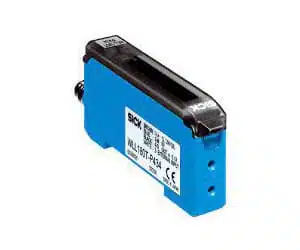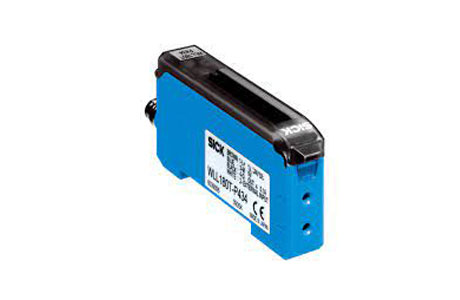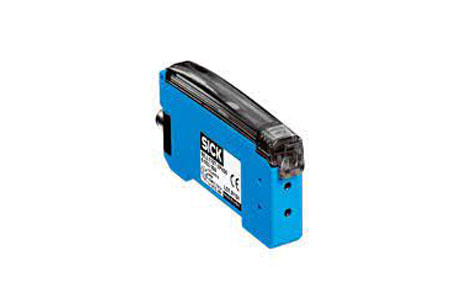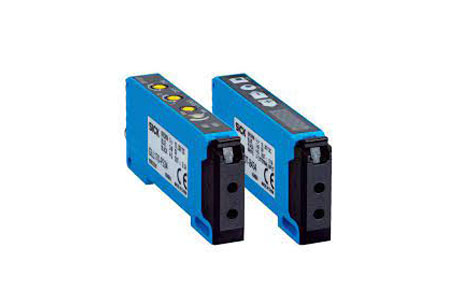Sick Fiber Optic Sensor: Fiber Optic Cable & Optical Sensors
Are you searching for Sick Fiber Optic Sensor? then you are in the right place we are offering some range of Sick Fiber Optic Cable and for some range of Sick Sensors, we will suggest one-to-one equivalent sensors. We can assure our prices are better than Authorized Sick Fiber Sensors Dealers or Sick Sensors distributors in Hyderabad, Pune, Tirupati, Bangalore, Chennai, Coimbatore, and Ahmedabad, India.
SICK Fiber Optic Sensor: WLL180 Series
- Fast Response Time: 16 µs.
- Sensing Range: Up to 20 m (through-beam), 1,400 mm (proximity).
- Display: Two four-digit digital displays.
- Commissioning: Easy, with external teach-in.
- Flexibility: Stand-alone or bus configuration.
- Anti-Interference: Integrated logic to prevent cross-talk.
Sick Fiber Optic Amplifier: WLL80 Series
- Response Time: Up to 16 µs.
- Sensing Range: Up to 20 m (through-beam system); up to 1.4 m (proximity system).
- Protection: IP54 enclosure rating.
- Display: OLED with text in various languages.
- Features: Stand-alone version with IO-Link, diagnostic functions, Smart Tasks, adjustable hysteresis, continuous threshold adaptation.
- Flexibility: Suitable for a wide range of applications, available in both single and bus versions.
Sick Fiber Amplifier: WLL170 Series
- Response Time: Rapid, with a high-speed version offering a switching frequency of 10 kHz.
- Teach-In Versions: WLL170(T) for automatic threshold setting via button or cable, and WLL170-2 with manual adjustment via potentiometer.
- LED Emitter: Options for red or green LED for optimal detection of color contrasts.
- Fiber-Optic Cables: Uses the LL3 series for secure and reliable detection tasks.
- Applications: Suitable for detecting small objects, colored marks, or transparent objects.
Sick Fiber Optic Sensors: GLL170 Series
- Response Time: Rapid, at 50 µs.
- Adjustment: Switching threshold via potentiometer or teach-in via pushbutton/cable.
- Enclosure Rating: IP66 for ruggedness.
- Variants: Potentiometer for easy commissioning and teach-in with display for direct feedback.
- Flexibility: PNP/NPN switchover (teach-in variant), 4-digit digital display (teach-in variant).
- Mounting: User-friendly, suitable for mounting rail or using fixing holes.
Product List:
| Model No | Image | Dimensions (W x H x D) | Sensing range | Light source | Supply voltage | Connection type |
|---|---|---|---|---|---|---|
| GLL170T-B432 | 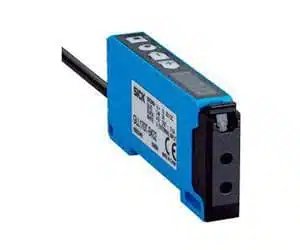 |
10 mm x 31.7 mm x 72.5 mm | 0 mm … 350 mm; 0 mm … 1,100 mm | LED | 10 V DC … 30 V DC | PVC Cable, 4-wire, 2 m |
| GLL170-P333 | 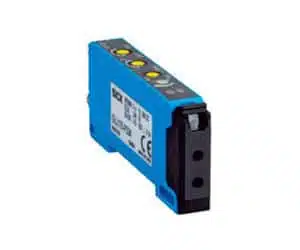 |
10 mm x 31.7 mm x 72.5 mm | 0 mm … 160 mm; 0 mm … 700 mm | LED | 10 V DC … 30 V DC | Connector M8, 3-pin |
| WLL170-2P390 | 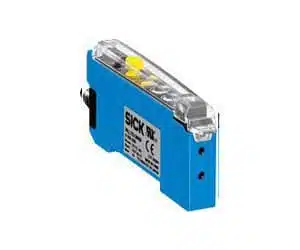 |
10.5 mm x 35.5 mm x 83.7 mm | 0 mm … 45 mm; 0 mm … 350 mm | LED | 10 V DC … 30 V DC | Connector M8, 3-pin |
| WLL180T-L632 | 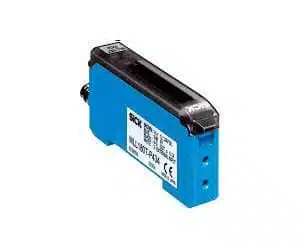 |
10.5 mm x 34.6 mm x 71.9 mm | 0 mm … 1,400 mm; 0 m … 18 m | LED | 12 V DC … 24 V DC | Cable, 5-wire, 2 m |
Frequently Asked Questions
What are the Two Types of Fibre Optic Sensors?
Fiber optic sensors are primarily categorized into two types: intrinsic and extrinsic. Intrinsic fiber optic sensors use the fiber itself as the sensing element, measuring changes within the fiber. Extrinsic fiber optic sensors use the fiber to transmit light to and from the external sensing element, detecting changes in the external environment.
What is a Fibre Amplifier?
A fiber amplifier is a device that amplifies light signals transmitted through optical fibers. It boosts the intensity of the light without converting it to electrical signals.
Typically used in telecommunications, fiber amplifiers enhance signal strength over long distances, ensuring clear and effective communication. They are essential in maintaining signal quality in fiber optic networks.
What are the Components of a Fiber Optic Sensor?
A fiber optic sensor typically consists of three key components: the optical fiber itself, a light source, and a photodetector. The optical fiber transmits light from the source to the target area and back.
The light source emits light into the fiber, and the photodetector measures changes in the light signal, indicating variations in the sensed parameter.
If you required Sick Fiber Optic Sensor, Get a Call: at +91 79955 44066

